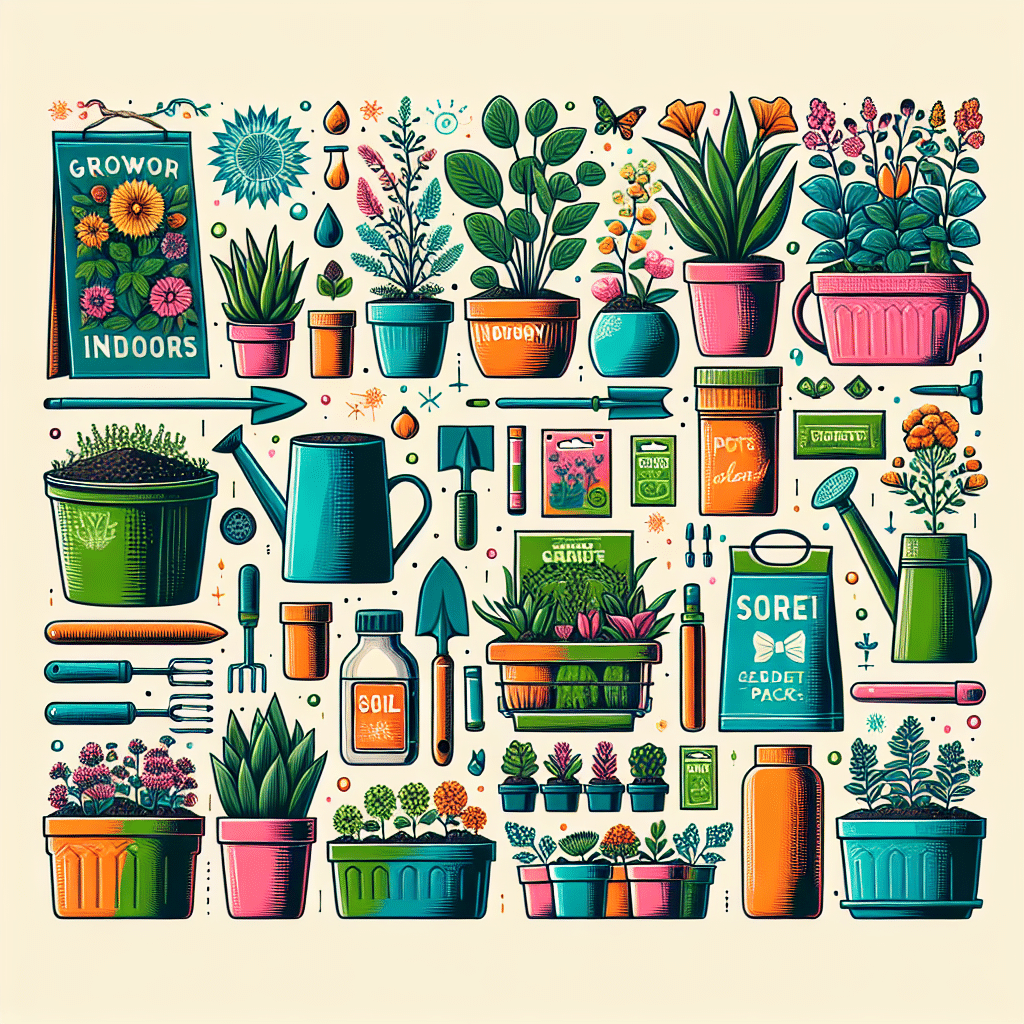Indoor gardening has surged in popularity as more people seek ways to bring greenery into their urban homes. Whether motivated by the desire for fresh herbs, vegetables, or decorative plants, indoor gardening kits provide an excellent starting point for beginners. This article delves into various types of indoor gardening kits, their benefits, features to consider, and tips for successful indoor gardening.
Benefits of Indoor Gardening Kits
1. Ease of Use
Indoor gardening kits are typically designed with simplicity in mind. They often include all necessary components, ensuring beginners can dive right in without extensive prior knowledge about plant care.
2. Space Efficiency
Ideal for apartments or limited spaces, these kits optimize vertical space and can accommodate small areas. Many kits can fit on countertops, windowsills, or small shelves, making them accessible for anyone regardless of home size.
3. Education and Understanding
Kits often come with detailed instructions and tips, helping beginners gain knowledge about plant growth, light requirements, and watering schedules. This educational aspect fosters a deeper appreciation and understanding of gardening.
4. Variety of Options
From herb gardening to succulent growing, beginners can choose kits that align with their interests. This variety spurs motivation and helps individuals select plants that they can truly enjoy nurturing.
Types of Indoor Gardening Kits
1. Herb Gardens
Herb gardening kits allow beginners to grow culinary herbs such as basil, cilantro, and parsley. Many kits provide seed packets, soil, and pots, promoting fresh cooking ingredients at home.
Features to Look for:
- Seed variety
- Nutrient-rich soil
- Instructions for care
2. Hydroponics Kits
Hydroponics kits enable soil-free plant growth using nutrient-rich water. These systems are often self-watering and highly efficient, making them perfect for growing leafy greens and herbs quickly.
Features to Look for:
- LED grow lights
- Water and nutrient management systems
- Compact size
3. Microgreens Kits
Microgreens are young plants harvested right after germination and are rich in nutrients. Kits specifically for microgreens come with trays, soil, and seed packs, catering to those interested in quick yields.
Features to Look for:
- Fast germination seeds
- Biodegradable trays
- Growing guides
4. Succulent and Cactus Kits
Succulents and cacti require less maintenance, making them ideal for beginners. These kits often come complete with pots, soil, and a range of drought-resistant plants.
Features to Look for:
- Aesthetic pots
- Soil designed for drainage
- Varied plant selection
5. Flower Kits
Indoor flower gardening kits allow beginners to grow vibrant blooms. Kits may include seeds for flowering plants that thrive indoors, along with full guidance on light and care needs.
Features to Look for:
- Seed varieties suited for indoor growth
- Tips for promoting blooming
- Aesthetic appeal
Key Components of Indoor Gardening Kits
When selecting an indoor gardening kit, consider the following components:
1. Quality of Seeds
The effectiveness of a gardening kit starts with quality seeds. Look for organic seeds or those from reputable suppliers to ensure good germination rates and plant health.
2. Growing Medium
The soil or growing medium should be tailored to the specific plants in your kit. A well-draining mix often yields the best results for most indoor plants.
3. Containers
Choose kits with appropriate containers that offer proper drainage. Pots with drainage holes prevent overwatering, reducing the risk of root rot and promoting healthy plant growth.
4. Grow Lights
For indoor gardening, especially in low-light conditions, LED grow lights can provide essential light for photosynthesis. Kits that include adjustable lights can help accommodate various plant heights.
5. Watering System
An effective watering system, whether self-watering or manual, can make plant care easier. Some kits come with caps or reservoirs to help regulate moisture levels.
Tips for Successful Indoor Gardening
-
Understand Light Requirements: Research the light needs of your chosen plants, as some require more sunlight than others. Position your garden near a window or invest in grow lights.
-
Maintain Proper Humidity: Indoor air can often be dry, especially with heating. Adding humidity trays or misting plants can help maintain moisture levels for thriving plants.
-
Regular Fertilization: While some kits come with nutrient-rich soil, indoor plants may still benefit from additional liquid fertilizers during growing seasons. Follow provided instructions for the best results.
-
Observe Watering Needs: Overwatering is a common mistake. Always check the topsoil to gauge moisture levels before watering.
-
Rotate Plants: For even light exposure, rotate your plants every week. This practice encourages balanced growth and prevents them from leaning toward a light source.
-
Watch for Pests: Inspect your plants regularly for common pests. Early detection can prevent infestations, ensuring that your indoor garden thrives.
-
Use Proper Tools: Invest in basic tools like a watering can, gardening gloves, and pruning shears, enhancing your indoor gardening experience.
Conclusion
Indoor gardening kits present a fantastic opportunity for beginners looking to cultivate plants within their homes. With various options available ranging from simple herb gardens to comprehensive hydroponics systems, aspiring gardeners can find a kit that meets their specific needs. By understanding the components of these kits and applying essential gardening tips, beginners can enjoy the rewarding experience of nurturing indoor plants while enhancing their living spaces.
